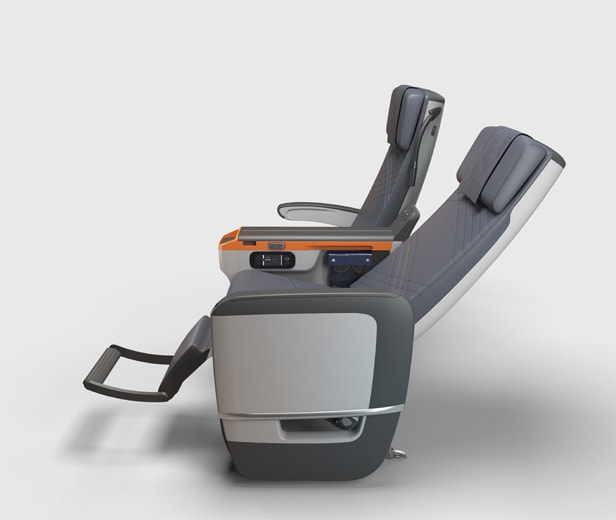Happy Medium: JPA Design Explains Why Airlines Should Make Premium Economy Differentiation Count – Part Three
Share

APEX contributor Marisa Garcia explores the rise of premium economy in a three-part web series, released every Friday starting November 20, 2015. In this series, we will look at how various airlines perceive their premium economy product and why the time is now for airlines to bring this class on board – if they haven’t already.
APEX Insight: The design of the unconventional premium economy cabin gives airlines an opportunity to demonstrate how well they understand its customers by tailoring the experience for that profitable, but often, ignored middle-market consumer demographic. JPA Designs shares its approach on its premium design for Singapore Airlines.
One of the most long awaited aircraft interior reveals this year was Singapore Airlines’ new premium economy cabin.
As Ben Orson, managing director, JPA Design explained at a recent Seating Innovations meeting in Hamburg, “Singapore came a little late to the party on premium economy seat. Lots of people were doing this and they felt they’d bide their time, understand the market and understand how they could make something different and better.”
The airline studied its target premium economy demographic to identify the unique psychological and socio-economic values of this passenger type. Singapore Airlines and JPA Design identified ‘status’ as a key purchasing and satisfaction driver for the Singapore Airlines premium economy passenger.
“That was a critical realization in the development of Singapore’s new premium economy class seat,” Orson said. “It was a deliberate attempt to create something that would resonate with these people. It’s the notion of status on the personal level – you are flaunting that you do well enough.”
JPA Design was thus set on designing a premium economy cabin that would be perceived by the target consumer as: “The place to be. A place that had its own status,” Orson said.

Singapore Airlines’ premium economy cabin breaks away from the brown and gold color scheme of the rest of the aircraft interior. “You have grey a very bright flash of orange [in the hardware], orange and ultramarine stitching on the backrest. It’s a very distinctive thing and doesn’t blend into everything else. It’s unashamedly premium.”
JPA Design also appealed to the consumer’s lifestyle aesthetic. “The target demographic we were trying to engage was slightly more youthful than business class and first class, or the family orientated demographic of economy class,” Orson said.
The design also ensured the customer immediately sensed the value of their ticket, and felt rewarded for their smart choice.
“It’s very much flaunting its functionality, the features that you paid extra for.” – Ben Orson, JPA Design
“We didn’t hide things under flaps or try to make things blend in. We made things stand out,” Orson said. “There’s a very big monitor on the back, a big stowage pocket in the back which we picked out in orange with the contrasting stitching.” An readily available reading light is perched on the side of the seat and coat hooks retain a traditional silver hook shape, rather than being moulded in.
“We really tried to emphasize the functionality so that when … you pay your money, and you get to the seat, you feel rewarded by all these extra features that Singapore Airlines has given you.”


